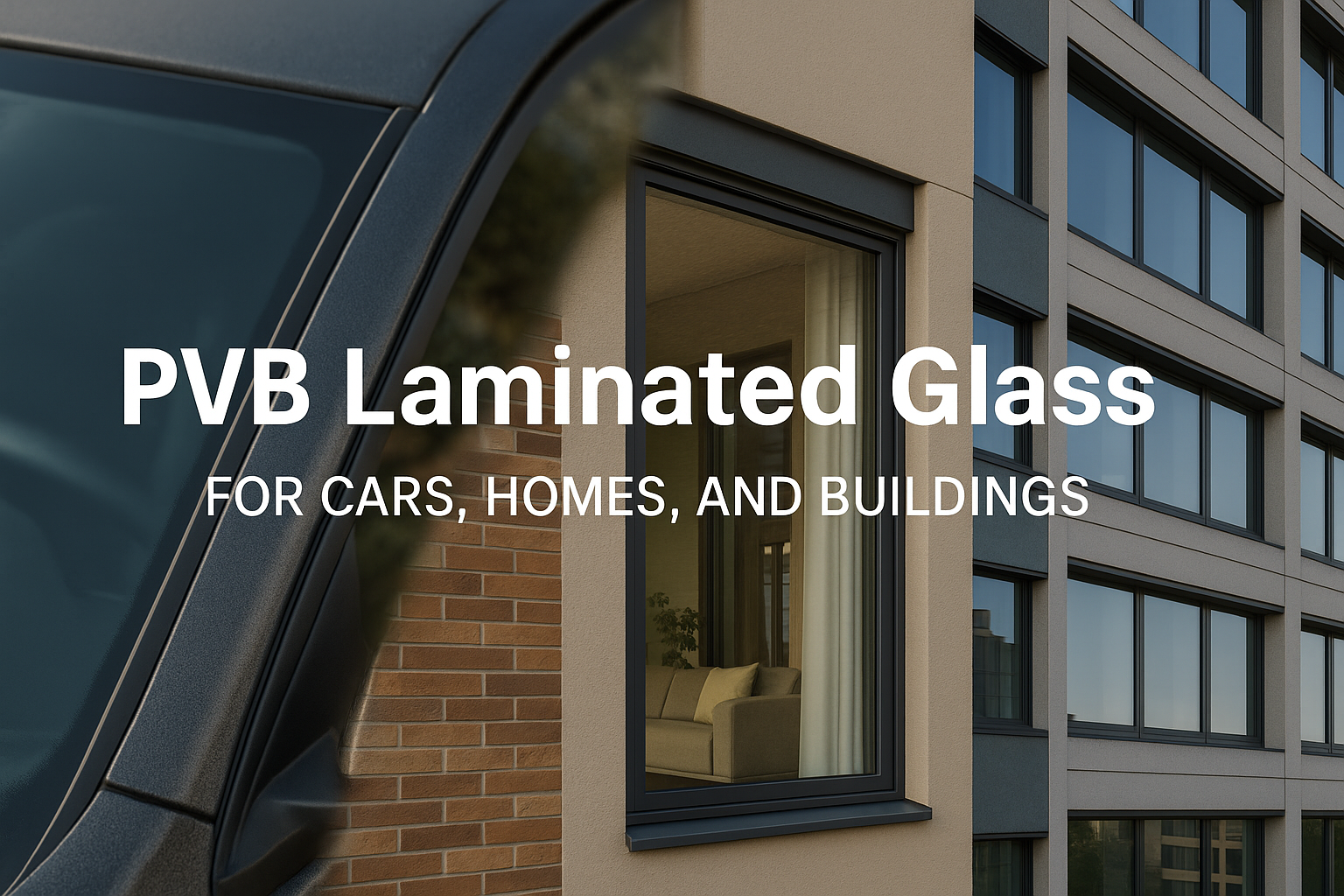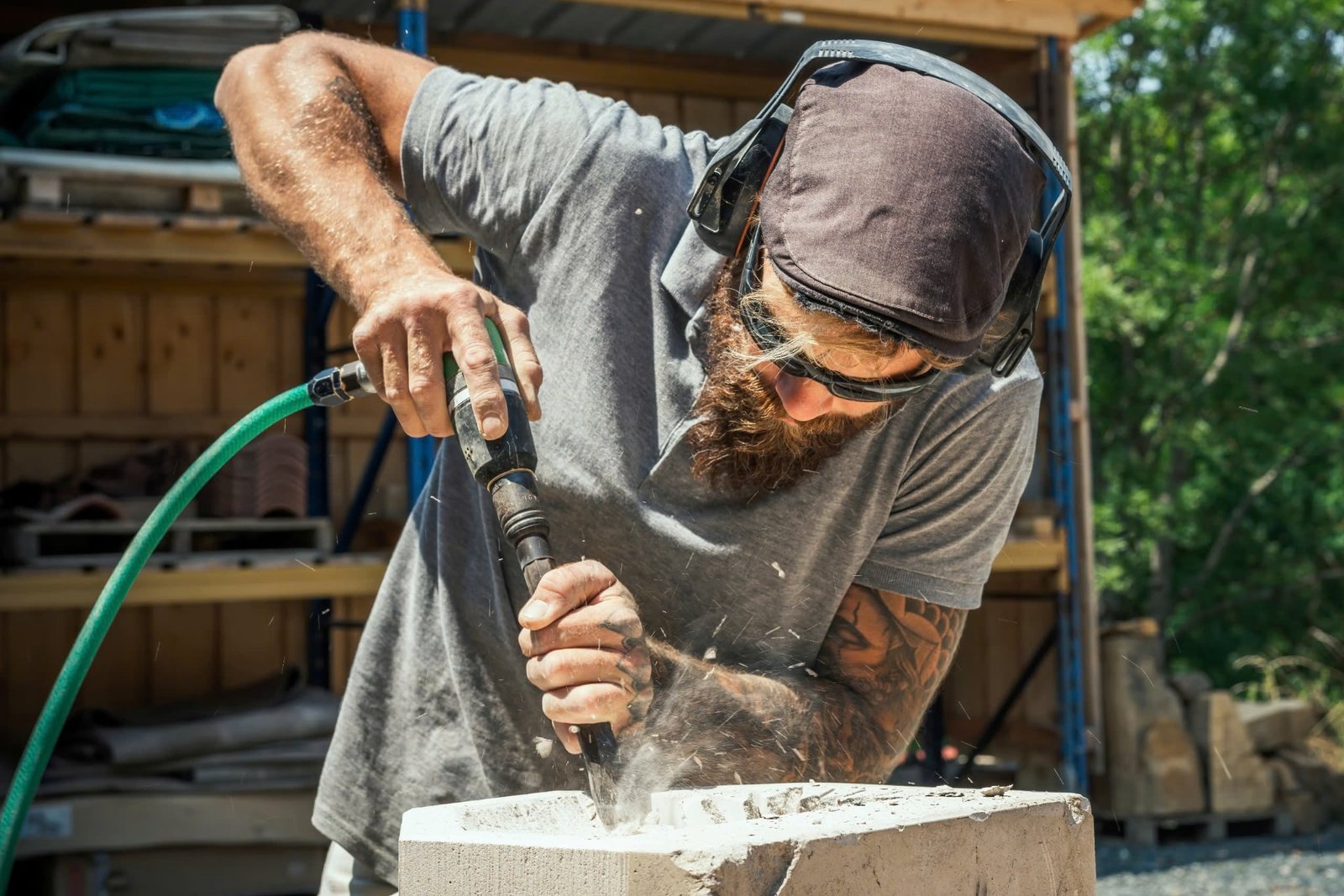
PVB laminated glass has become a standard material in multiple industries, especially in automotive, residential, and commercial architecture.
PVB laminated glass has become a standard material in multiple industries, especially in automotive, residential, and commercial architecture. Known for its safety, strength, and aesthetic versatility, this type of laminated glass is now seen in everything from car windshields to floor-to-ceiling windows in modern skyscrapers. As design demands increase and safety standards evolve, PVB laminated glass continues to provide a reliable solution. This article explores how PVB laminated glass serves cars, homes, and buildings, how it compares to alternatives like SGP laminated glass, and why it’s one of the most trusted materials in modern construction and manufacturing.
What Is PVB Laminated Glass and How Does It Work?
PVB laminated glass is made by bonding two or more layers of glass with a polyvinyl butyral (PVB) interlayer under heat and pressure. This interlayer acts as a strong adhesive and provides various performance benefits such as impact resistance, UV protection, sound insulation, and visual clarity. When the glass is broken, the PVB interlayer holds the pieces together, reducing the risk of injury and preventing the glass from shattering into sharp fragments.
Its unique combination of durability and transparency makes it a superior alternative to standard glass in applications requiring both aesthetics and security. To learn more, check out PVB Laminated Glass: Everything You Need to Know.
PVB Laminated Glass in Automotive Applications
The automotive industry was one of the first to adopt PVB laminated glass, especially for windshields. The reasons are clear: safety, comfort, and noise reduction. In a car crash, the laminated glass holds together even when broken, reducing the likelihood of passenger injury. Additionally, the interlayer prevents ejection and intrusion, offering enhanced protection during collisions.
Automotive laminated glass also contributes to driver and passenger comfort by blocking harmful UV rays and minimizing heat buildup inside the vehicle. Some advanced versions even incorporate acoustic PVB layers to reduce road noise and improve the driving experience.
Because of its superior strength and clarity, PVB laminated glass is now being used beyond windshields—on side windows, sunroofs, and panoramic roofs in high-end and electric vehicles.
PVB Laminated Glass for Residential Use
In residential architecture, PVB laminated glass provides homeowners with a balance of style, security, and environmental benefits. It is commonly used in:
- Sliding doors and large windows
- Glass railings and staircases
- Skylights and overhead glazing
- Bathroom partitions and shower enclosures
The main advantage of using PVB laminated glass in homes is safety. If a child or pet accidentally collides with a glass door or panel, the laminated glass won’t break into dangerous shards. It also improves security by deterring break-ins—burglars find it harder to penetrate laminated glass due to its resistance to blunt-force impact.
Moreover, PVB laminated glass contributes to energy efficiency. It blocks up to 99% of harmful UV rays, preventing interior furnishings from fading. When combined with low-E coatings or used in double-glazed units, it significantly improves thermal insulation, reducing heating and cooling costs.
For design applications, colored and patterned interlayers allow homeowners to personalize spaces without compromising safety. To explore more interior design applications, visit PVB Laminated Glass in Architecture and Interior Design.
PVB Laminated Glass in Commercial Buildings and High-Rises
Commercial architecture has embraced laminated glass for both functional and aesthetic purposes. In office towers, hotels, airports, and educational institutions, PVB laminated glass enhances building performance and aesthetics.
Applications include:
- Glass curtain walls and façades
- Partition walls and conference room dividers
- Soundproof office glazing
- Storefronts and security glazing
Its ability to resist wind pressure, earthquakes, and impact makes PVB laminated glass a key element in structural glazing. For multistory buildings, it provides protection against falling debris and offers superior soundproofing—a must for offices in noisy urban environments.
Another significant advantage is its contribution to sustainability. Laminated glass can be designed to meet energy codes, reduce HVAC loads, and earn points toward green building certifications.
PVB Laminated Glass Installation Guidelines
Proper installation is crucial to get the most out of PVB laminated glass. Some considerations include:
- Ensuring glass is handled carefully to avoid damage to the edges
- Using compatible sealants and framing systems
- Allowing for adequate drainage to prevent moisture build-up near exposed edges
- Avoiding direct exposure of edges in external applications to prevent delamination
Whether it’s for a car, home, or building, following correct PVB laminated glass installation procedures ensures long-term durability and optimal performance.
Caring for and Maintaining PVB Laminated Glass
Maintenance is straightforward but essential. Regular cleaning with non-abrasive, pH-neutral cleaners keeps the glass looking clear and fresh. Avoid ammonia-based solutions that may degrade the interlayer over time.
Periodic inspections should be conducted to check for signs of delamination, discoloration, or edge damage. In cars and exterior installations, make sure drainage systems are not blocked, and avoid allowing water to pool near glass edges.
In general, PVB laminated glass care and maintenance require minimal effort when installed correctly and monitored routinely.
Cost and Price Factors of PVB Laminated Glass
The price of PVB laminated glass varies depending on several factors:
- Glass thickness and interlayer composition
- Size and shape of the panel
- Special features like color tinting, acoustic damping, or fire resistance
- Quantity and customization needs
On average, residential and architectural PVB laminated glass ranges between $20 and $60 per square foot. Automotive glass may be priced differently due to manufacturing processes, curvature, and regulations.
Although SGP laminated glass is stiffer and more durable, it is also more expensive. For most general applications, PVB laminated glass provides the right balance of affordability and performance. Learn more about this comparison at SGP vs PVB Laminated Glass: Key Differences Explained.
Where to Source PVB Laminated Glass
Working with reputable PVB laminated glass manufacturers ensures quality control, proper certification, and customization support. Look for manufacturers that:
- Provide ASTM or EN certified products
- Offer heat-strengthened or tempered laminated options
- Support custom orders for automotive and architectural applications
- Provide clear installation guides and warranties
Global manufacturers often maintain partnerships with local fabricators, making it easier to source PVB laminated glass with regional compliance standards.
Why PVB Laminated Glass Is a Versatile Material Across Sectors
Whether you’re designing a safer car, building a more secure home, or developing a sustainable skyscraper, PVB laminated glass offers a multifaceted solution. It combines safety, clarity, noise control, and design flexibility in a way that few materials can match.
Its continued use in architecture, vehicles, and interiors is proof of its reliability. As building codes become stricter and design expectations grow, the demand for high-performing laminated glass will only rise. Choosing the right type, ensuring proper installation, and following up with maintenance guarantees you’ll benefit from PVB laminated glass for years to come.
For further insights into its production, visit How is PVB Laminated Glass Made? and explore detailed use cases in PVB Laminated Glass: Everything You Need to Know.

